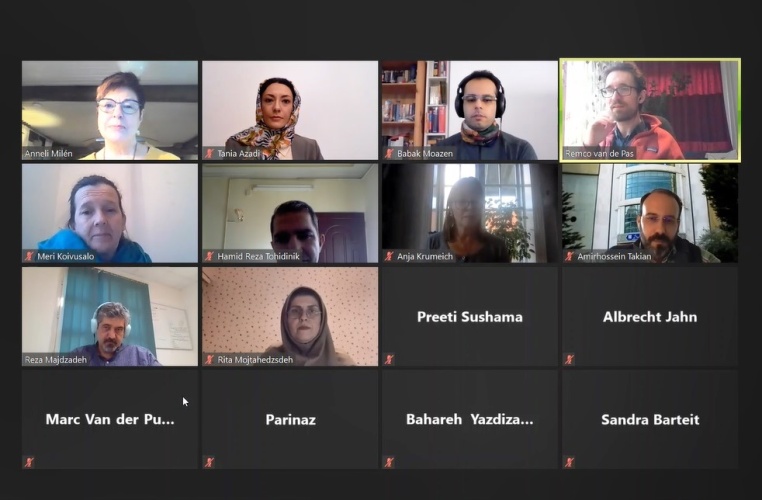eLearning Capacities at TUMS Discussed on the Two-Day Online Kick Off Meeting of the INPACT Project

Dr. Mojtahedzadeh, the Vice Dean of International Affairs of TUMS Virtual School, was one of the lecturers at the kick off reviewing the history, stages of development, evolution and challenges of digitalization of education and eLearning at TUMS.
She began her lecture by mentioning the history of formal e-learning activities at TUMS: "The organized e-learning activities at TUMS first began in 2005, and resulted in the establishment of TUMS Virtual School in 2010, and following TUMS, other Iranian universities of medical sciences started to launch virtual schools or departments. So, TUMS Virtual School is reputed as the scientific pivot of e-Learning in medical sciences in Iran, and is currently known as “the National Center of Excellence for e-Learning in Medical Education.”
Dr. Mojtahedzadeh stated that before COVID-19, the e-Learning dissemination targets were divided into three categories as follows:
- Online degree programs in the form of Blending Traditional programs were commenced in 2006, and approximately 25% of TUMS’ faculty members were actively using e-learning facilities in their courses before COVID-19 crisis.
- Electronic Continuous Medical Education (e-CME) under which more than 300 programs have been delivered and 30000 certificates have been issued since 2007.
Dr. Mojtahedzadeh also elaborated on the steps for delivering a virtual/blended program and said: "curriculum development and instructional design for virtual/blended delivery are two steps that need to be done simultaneously. A successful e-program design needs the involvement of “content experts“, “instructional designers“and “IT experts“to work together and bring about ‘appropriate contexts, teaching methods, software, and …’. In next step, we will have “faculty development”, “developing the material/ courses”, and “defining evaluation plan”; and then, “program delivery” will be the last step".
The Vice Dean of International Affairs of TUMS Virtual School, then, noted that the actions taken by TUMS during COVID-19 pandemic were "reorganizing the help desk system", "faculty members’ capacity building", "delivering courses through LMS & online platforms monitoring", and "carrying out e-learning activities".
She added that the main requirements for e-learning establishment are rules, training programs, E-content facilities, Hardware and Software.
According to Dr. Mojtahedzadeh, TUMS is currently using the following softwares and platforms:
- LMS: TUMS’ Learning Management System (LMS) is a national system which is designed and developed by TUMS’ e-learning experts, and is used by all universities of medical sciences in Iran.
- Synchronous commercial platforms
- e-CME platform
- Staff development platform
- e-Exam software
- e-Logbook
At the end, she stated having e-learning expert human resources, using a user friendly LMS, having e-content development facilities, and holding acceptable experience in delivering online courses and workshops as the main TUMS’ Opportunities and advantages in e-learning, and technical issues, sanction issues and filtering, some faculty members’ resistance, LMS being under development (for extra modules like gamification) as TUMS’ challenges and limitations in e-learning.
It is worth noting that as part of the INPACT project, MSc in Global Health with an Iranian flavor, a regional scope and global audience will be implemented through a blended learning method.

Your Comment :